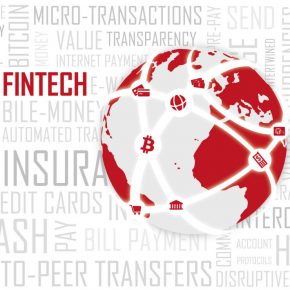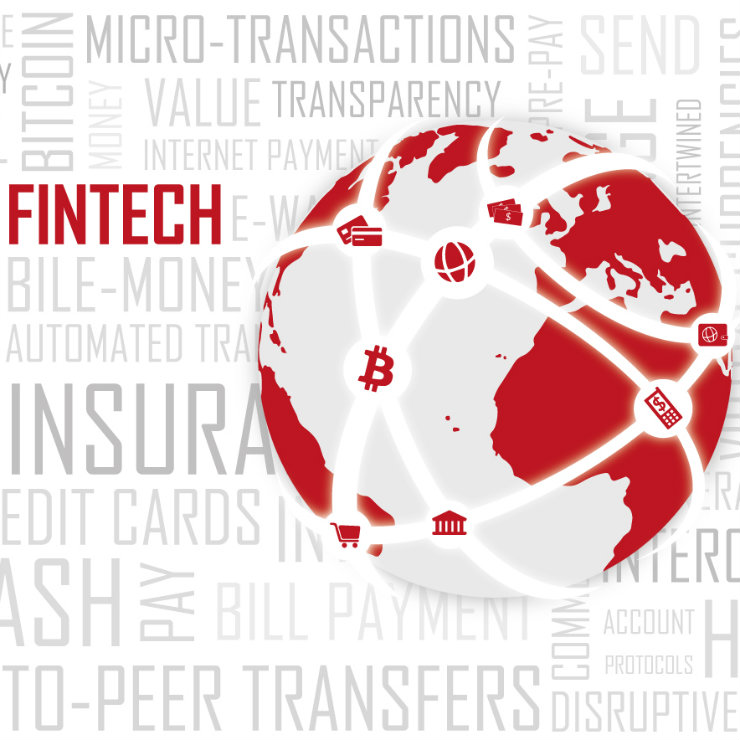The role of central banks in the digital transformation of financial markets
Category: Macroeconomics

(Monito - Money Transfer Comparison, CC BY)
Financial inclusion is usually defined as having broad access to financial services and using them. In recent years, this issue has attracted greater interest both in the scientific community and among the policy makers. Given the current economic conditions, which have made apparent the scale of economic and social inequality, the promotion of financial inclusion is seen as one of the ways of mitigating these issues.
Incomplete or inadequate access to financial services is a problem faced by a large part of the population around the world, but the nature of such problems depends on the specific region or country. Only 62 per cent of adults worldwide have access to basic financial services, defined as having a bank account or a mobile account. Additionally — despite the fact that 57 per cent of adults in the world have a basic bank account — they do not have access to diversified investment and savings options, cheap payment systems, basic insurance products for households and enterprises, as well as loans, which is a particular challenge for small businesses.
The resulting low levels of financial well-being and financial uncertainty are problems that are not only limited to developing countries. Such problems have been disseminated and democratized along with the growing income inequality, which also applies to the developed economies.
The achievement of financial inclusion and financial security is universally recognized as the key to reducing poverty and achieving sustainable economic growth. It also has a positive effect on consumption, the labor market, incomes and on certain aspects of physical and mental health.
Digital technology is radically changing habits and the functioning of enterprises. It changes the way in which people produce, buy goods and services and interact with each other. New technologies „virtualize” everyday tasks, from economic and interpersonal relations to the purchases of goods and services. In the digital age, financial, economic and even social inclusion depends on technological inclusion.
People’s everyday activities increasingly depend on communication. In 2016, about 95 per cent of enterprises in OECD member countries had a broadband internet connection, and over 75 per cent of them were present on the internet. In that year half of the adult population in the world purchased goods or services online, compared to only 36 per cent back in 2010.
Innovations have had a great impact on mobile devices. Smartphones currently have computing power much greater than supercomputers in the 1960s, and they are one hundred thousand times lighter and ten thousand times cheaper. Last year, 1.5 billion smartphones were sold around the world — this corresponds to one fifth of the world’s population. It is estimated, that technology and mobile services have added USD3.6 trillion, or 4.5 per cent, to the global GDP in 2017.
The financial industry has always been an early adopter of new technologies. The first ATM was installed in 1967 at a Barclays bank branch in London in order to allow customers to withdraw cash after normal business hours. Since then, many automated services, such as the second-generation ATMs, point of sale systems, debit and credit cards, and online banking services, have been offered in response to the customers’ demand for immediacy.
Therefore, the widespread use of digital technology in finance in recent years has not been surprising, but has been a reaction to the demand for specific products and services. It is expected, that the use of digital financial services will continue to grow, among other things, due to increasing customer expectations, the spread of the internet, smartphones and tablets, and the improvement of the processing capacity of computer systems, including through cloud computing. Great progress has been made over the last few years — for example, the amount of data exchanged around the world is now 45 times greater than in 2005, while the cost of information storage is 10 times lower than in 2010.
The financial revolution is taking place all around the world and is being driven by mobile phones, access to new data, technological innovation and the changing attitudes of the users of financial services. Within the fintech sector, new players entering the market are focused on profits, but are also attempting to enable greater financial inclusion. Fintechs support financial inclusion through the creation of innovative products or application of innovative business strategies. They are expanding the capabilities and improving the financial health of households and organizations around the world.
At the same time, the competition from companies operating in the fintech sector is starting to pose a threat to traditional banking. According to the estimates, over the next ten years, as fintechs continue to branch out to other market segments, they could take over up to 60 per cent of the profits thus far obtained by banks from retail services.
Financial services are still for the most part distributed through traditional channels. Fintechs play a major role only in certain segments of the financial sector, such as retail payments, asset management and small loans. But their scope is rapidly expanding into sectors such as crowdfunding and services related to customer relationships. The use of technologies such as AI, Big Data and distributed ledgers is also increasing.
New technologies can help financial service providers to reduce the transaction costs throughout the entire value chain, starting from distribution to customer service and back office operations, and thus play a key role in the dissemination of financial services. Examples include digital distribution via mobile phones, cheaper acquisition and servicing of customers using bots and social networks, better fraud prevention and credit scoring through the use of machine learning, and the reduction of back-office costs through process automation.
By utilizing the capabilities of electronic transactions, cell phone communications and new technologies to transform and automate processes, new participants of the payment system have significantly expanded access and reduced the costs for all the users and have made the system available to a greater number of people.
Additionally, fintechs are also entering the credit market. In developing countries, many consumers and small businesses have limited access to credit, because they cannot fully meet the requirements set out by banks, such as a credit history from a credit information bureau or appropriate loan collateral. Expanding access to financing for small businesses is a priority of almost all government programs, due to the importance of this sector for the creation of jobs and economic growth.
Most of the alternative lenders are taking advantage of machine learning in order to better utilize the existing structured and unstructured data sources (such as financial history, mobile device usage data and eCommerce transaction data) in the process of assessing the creditworthiness of people without a formal credit history from a credit information bureau. Additionally, the alternative data sources help in strengthening fraud control. Of course this also entails certain problems — both when it comes to data privacy and the accuracy of estimates provided by the customer assessment models.
Fintechs are also filling market niches in the field of personal finance by creating new, more personalized savings and investment products and services. Digital identification (such as, for example, the Indian Aadhar system) and the popularization of digital services among consumers and small businesses are removing barriers within this segment of financial products, which is conducive to the accumulation of savings. Moreover, many fintechs provide their clients with aggregated information about their own financial health, which reduces the asymmetry of information and could help improve the financial condition of the recipients of financial services. What’s more, thanks to the customers’ wide access to comparisons of products among many financial services providers, they are able to make more informed financial choices.
Technology may also support financially excluded, low-income people who are disproportionately more likely to be exposed to various negative economic circumstances as a result of unexpected crises. Simple and inexpensive insurance products could minimize this risk, but thus far the distribution of such products by insurance companies was unprofitable. As a result over four billion people around the world are currently not benefiting from insurance products.
Digital distribution combined with Big Data, data analytics and machine learning has started transforming the insurance industry. Insurance policies can now be sold for a fraction of the sales cost, among other things, through mobile applications and through partnerships with mobile network operators. Meanwhile, the Internet of Things allows insurance companies to track the use of insured goods and to offer insurance policies that are better suited to the actual use, unique insurance needs and the risk profile.
Even though digital products and financial services offered through suppliers from the fintech sector have a positive effect on financial inclusion in emerging and developed economies, it is also important to be aware of the challenges related in particular to the consumers’ access to mobile and digital devices and adequate Internet connectivity.

